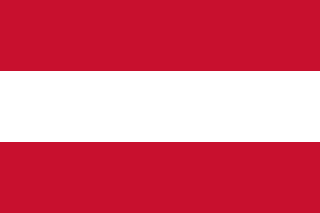Austria Flag Story

The red-white-red triband: A symbol of Austria's rich history and national identity.
Colors: red, white
Pattern: Horizontal triband
The Austrian Flag: Red-White-Red
The Austrian flag, with its distinctive red-white-red horizontal triband design, is a powerful symbol of Austria's national identity and rich history. It is one of the oldest national flags in the world, with its origins dating back to the Middle Ages.
History
The history of the Austrian flag is steeped in legend and historical accounts:
- The flag's origins are traditionally attributed to Duke Leopold V of Austria during the Third Crusade in 1191.
- According to legend, Leopold's white tunic became drenched in blood during battle, leaving a white stripe when he removed his belt.
- The first documented use of the red-white-red colors dates back to 1230, on the seal of Duke Frederick II.
- The current flag design was officially adopted on May 1, 1945, following the end of World War II and the reestablishment of an independent Austria.
Design and Symbolism
The Austrian flag consists of three equal horizontal bands:
- The top and bottom bands are red.
- The middle band is white.
- The ratio of the flag is 2:3.
While there is no official symbolism assigned to the colors, they are deeply rooted in Austrian history and heraldry.
Cultural Significance
The Austrian flag holds great importance in Austrian culture and national identity:
- It is prominently displayed on government buildings, schools, and during national celebrations.
- The flag is a source of pride for Austrians, representing their country's independence and sovereignty.
- It is often seen at sporting events, particularly when Austrian athletes compete internationally.
- The flag's design has inspired similar flags in other countries and regions, such as Latvia and the city of Vienna.
Interesting Facts
- The Austrian flag is one of the oldest national flags still in use, with its design dating back to the 13th century.
- During the Austro-Hungarian Empire (1867-1918), Austria used a different flag that incorporated the Habsburg dynasty's coat of arms.
- The flag's simple design has made it a popular choice for face painting and other patriotic displays during national events and celebrations.
The Austrian flag continues to serve as a powerful symbol of national unity and pride, representing the country's long history and its modern identity as a sovereign nation.